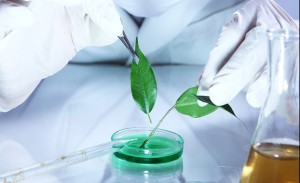
Biotechnology in Agriculture
Globally, 811 million people lack adequate food access, with 42 million people in 43 countries facing an immediate risk of famine, which is defined by intense hunger and a possibility for death from starvation or related diseases. Genetically modified (GM) crops have the potential to be strong complements to those grown using traditional methods, responding to worldwide need for high-quality food items. The sustainable integration of advanced biotechnology with conventional agricultural practices represents a realistic way to attain food security for current and future generations. While there are inherent risks connected with genetically modified organisms (GMOs), careful management can effectively control these issues.
Genetically modified organisms, or GMOs, are defined as any plant, animal, microbe, or other entity whose genetic makeup has been changed in a lab through the use of genetic engineering or transgenic technology. This entails the synthesis of novel gene combinations from bacteria, viruses, plants, and animals that do not arise naturally or as a result of conventional crossbreeding techniques. Corn, soybeans, cotton, potatoes, papaya, squash, canola, alfalfa, and apples are a few examples.
The application of biotechnology in seed production has resulted in notable advancements in the quality and accessibility of enhanced seeds and planting materials for farmers worldwide. Biotechnological tools are used to protect seeds with biological control agents, detect and eliminate diseases transmitted through planting material, accelerate the vegetatively propagated crop's multiplication process, and confirm the varietal identity and purity. Furthermore, the use of biotechnology in plant breeding improves precision in desired genome alterations, speeds up the selection process, and makes it easier to create new genetic combinations that are not possible with traditional breeding techniques.
Several essential conditions must be met for a gene to be successfully introduced into a plant. First, it is necessary to identify the gene linked to a certain trait, which means that the connected pathway and regulatory mechanisms must be understood. After being identified, the gene needs to be isolated, which may involve obtaining it from a species of related plants or even from an unrelated organism like an animal or bacterium. After the gene has been extracted, it needs to be carefully inserted into the target plant and put under the right conditions to guarantee perfect expression and functionality. The altered plant material is then carefully tested for gene activity before being rearranged into a whole plant. The line is multiplied, and field tests are carried out if the testing is successful. This procedure uses cloning vectors, which are small DNA segments taken from cells, as part of its cloning methodology. Using a selected restriction enzyme (R.E.), such as EcoRI, this vector is cut. The restricted cloning vector and the desired DNA fragments are combined at the same time as the target DNA is cut using the same or a comparable R.E. Using DNA ligase, the fragments are joined, and the ligated DNA is subsequently introduced into the chosen host. Restrictive growth conditions are applied to the host cells, frequently on antibiotic-containing plates.
Plants have strong cell walls made of cellulose, and complete plants have waxy cuticles and bark. These factors make it difficult to modify plant cells. Many strategies have been used to get beyond these obstacles such as unaided homologous recombination, recombinase-based methods, DNA repair-based methods, and CRISPR-Cas. Other methods include: Meganucleases, ZFNs, and TALENs
Alternative approaches for generating novel crop varieties without involving genetic modification techniques like Hybrid: Breeding involving two non-clonal plants, Polyploid: Duplication or addition of entire genomes, Mutation breeding: Inducing DNA damage through chemicals or radiation, Crossing species barriers: Crosses between different species. While the Transgenic methods for creating new crop varieties include Classical Breeding: Breeding closely or distantly related plants to develop new crop varieties with desired traits, Cisgenesis: Modifying a plant with a natural gene from a sexually compatible plant, keeping the gene's native elements. No foreign genes are introduced, Intragenics: Modifying a plant with genetic elements (promoters, coding sequences) from sexually compatible plants. No foreign genetic elements are included, Transgenesis: Modifying a plant with genes and/or promoters from non-plant organisms or sexually incompatible plants. Allows incorporation of genetic material from diverse sources.
Biotechnologies have a lot of potential for the agricultural industry since they can improve crop digestibility for both people and animals, producing genotypes that are resistant to abiotic stresses like drought and salinity, enhancing agronomic characteristics to raise the potential production of plants and animals, producing high nutritional levels in staple crops that are nutrient deficient, such as rice, such as pro-vitamin A, iron, and important amino acids and preventing fruits and vegetables from being overripe in order to reduce post-harvest losses.
The Environmental advantages of using GM crops: When genetic engineering is effective, the need for pesticides is reduced. As a result, there are fewer pesticide residues on food, fewer pesticide leaks into groundwater, and farm workers are exposed to fewer potentially hazardous products. Additionally, it enhance size and alter the morphology of fruits and vegetables, increase nutritional content, improve taste, and elimination of undesirable traits. Hazards associated with employing genetically modified organisms and their impact on the ecological stability of the GMO: Genetic contamination or interbreeding, Potential long-term consequences, Ethical considerations, Competition with native species, Impacts on ecosystems.
